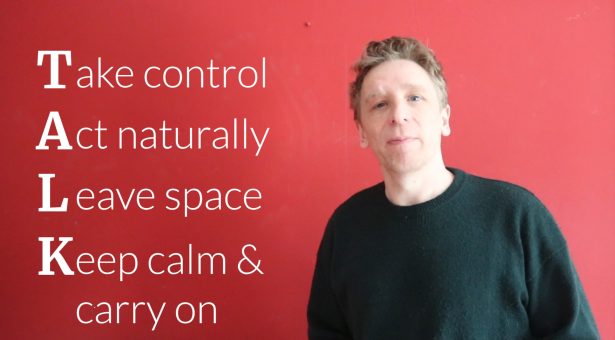How to give a successful talk; Part 3; Delivery

James Piercy, our Outreach and Engagement expert returns with the third and final part of his ‘How to give a successful talk’ series, focussing this time on delivery.
If you missed them, catch up with Part 1; ‘How to prepare’, or Part 2; ‘How to avoid dumbing down’ first.
“I first started giving science talks school children about 25 years ago and I made a lot of mistakes at first. However, I came to learn how to grab and hold attention and the importance of understanding your audience.
Over the years, I’ve had the pleasure of speaking to groups of all ages and in countries around the world and if I’ve learned one key thing it is this: people like other people and are interested in what they say. If you have an interesting story or message, other people will want to hear it so get out there and tell them.
Public speaking is for some a terrifying prospect and for others it is a real challenge to engage with audiences effectively.
The best way to improve your presentation skills is to practice. Experience of presenting different topics to different audiences is the most effective way of improving your skills but there some tips and things to remember each time you give a TALK.
T is for Take control
If you are speaking you want people to listen so use your voice and body language to send a message which says, “I am in charge.”
Make it clear that you have started and that you are worth paying attention to.
Audiences reflect what they see on stage, if you show confidence the audience will have confidence in you, if you look nervous, unsure or apologetic the audience will question what you say and lose confidence in your message.
Some audiences will be unsure how best to behave. Can they ask questions? Can they laugh? How long will it last? You can use opening remarks and your delivery to set the tone in the room.
Remember you are responsible for everything that happens during your talk. You make things happen or you let them happen. Embrace the power but use it wisely.
A is for Act naturally
People are interested in other people. We are social animals and the biggest hook you have to engage people in your topic is your own personality so don’t be afraid to show some of it.
You may have to adapt your language a little to suit an audience but try to speak naturally. It doesn’t matter if you “um” and “err” a little, they are normal parts of speech, and accents are interesting.
Also, while it is really important to practice a talk before you give it, be careful about over-rehearsing and memorising the lines. This can sound forced and unnatural. Give a little of yourself and the audience will thank you for it.
L is for Leave space
There is a temptation to try to say too much, when you write your talk concentrate on the key message and avoid unnecessary detail. Similarly, when you give the talk think about how you will deliver it to emphasise those points.
Don’t speak too quickly and leave pauses in your speech. These gaps allow audiences time to think and reflect on what you have said and can add stress at important moments.
If you have words or names you want people to remember leave a pause after you have said it, then repeat it in the next sentence. If you want people to predict what is coming, allow them time before revealing your conclusion.
K is for Keep calm and carry on
The fear of public speaking is called glossophobia. It is very common, with some reporting it as more scary than death.
While we should not just dismiss these fears, it is worth putting them into some perspective. What is the worst that can happen a result of your talk? Even it goes terribly; no-one laughs at your jokes, you lose your place and your trousers fall down. Nobody died and you will have great story to tell in years to come.
The secret to minimising nerves and avoiding mistakes is preparation. Practice your delivery, write down names or key things you must not forget and check your trousers are secure before you start.
If you make a mistake or lose your place during the talk just stop. Take a breath gather your thoughts and carry on. Remember nobody knows what you were going to say and won’t notice if you forgot or missed a bit. If you need to repeat a section, simply apologise and start again.
Most of all, remember audiences like you, they want you to succeed.”
